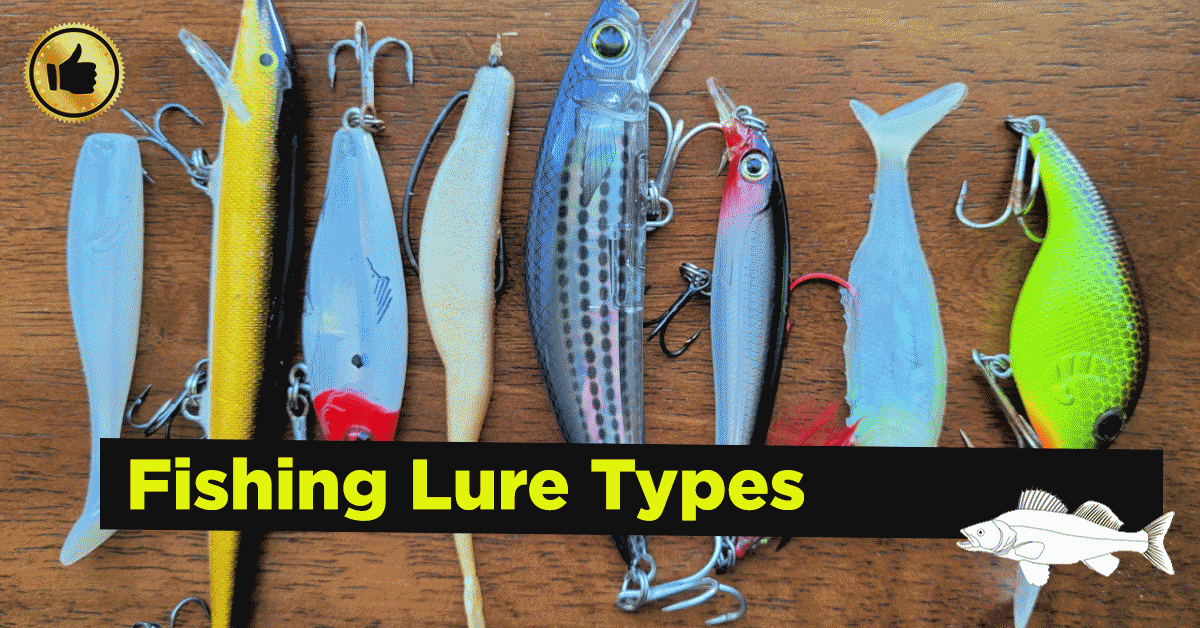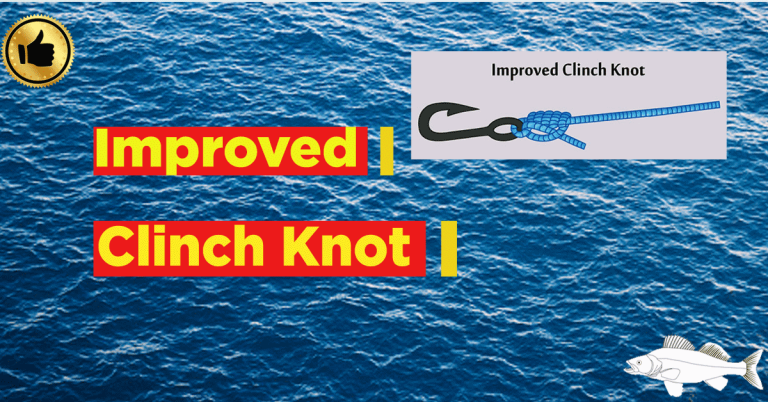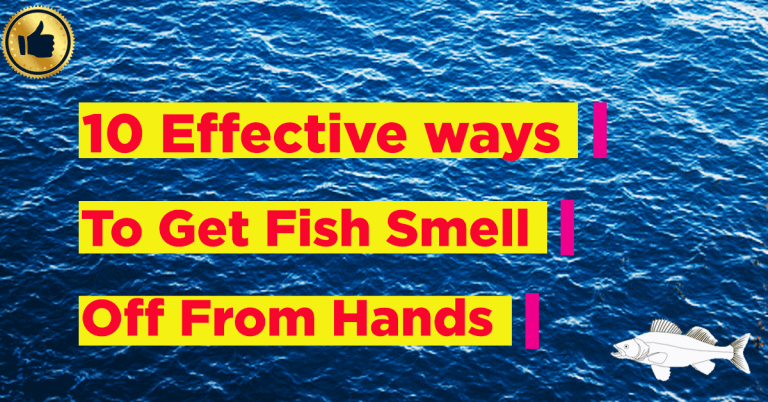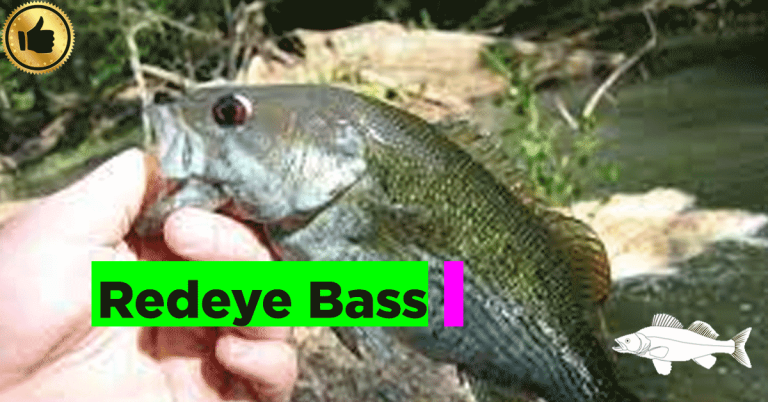Fishing Lure Types- How to Choose the right lure
Do you want to improve your skills as an angler? Selecting an effective fishing lure will greatly increase your catch rate. It might be difficult to know where to begin when choosing a lure because there are so many options. This article will discuss several fishing lure types and when they are most effective. Whether you’re fishing for bass in a freshwater lake or marlin in the open ocean, you’ll find useful information on the various lures.

Fishing Lures – What are they, and why should you use them
If you want to catch fish, you need fishing lures. Whether it’s fish, insects, or crabs, these artificial baits are made to look and behave like their real counterparts. There is a wide variety of lures, each with its own design and function, so it’s important to know what they are and when to use them.
To begin, fishing lures are created to entice fish by looking like the food they would normally eat. Crankbaits can be used to mimic fleeing baitfish, while jigs can be used to mimic crawfish or worms. With the correct lure, fishermen improve their chances of getting a bite.
Second, fishermen can cast their lines over larger areas. Lures may be thrown, recovered, and moved about to different depths and sections of the water column, whereas live bait may need a fixed approach. As a result, fishermen are better able to respond to shifting fishing circumstances and pursue a wider variety of fish species.
Finally, fishing lures can save you money over live bait since they can be used several times and last longer. If you take good care of your fishing lures, they will serve you well for many years.
Fishing lures are versatile, inexpensive, and may improve your chances of luring fish into biting. There are a wide variety of lures out there, and to catch the most fish possible, you’ll need to know what each one does and how to use it properly. If you want to catch more fish on your next fishing trip, be prepared for anything by packing a wide range of lures.
Types of Fishing Lures
Spinners, which include an object that spins around a wire shaft, are one such type of multipurpose lure. Sizes, hues, and patterns abound, and they may be used in both saltwater and fresh. Fish may be drawn in from great distances by the flash and vibration created by spinners.

Crankbaits are a popular form of lure because they mimic the swimming action of baitfish. Some are larger and may go further down the water column than others. For catching predatory fish, a crankbait is a great option because of the lip that makes it wriggle and dive when it is retrieved.

Hard baits: There are hard baits, which may be of different sizes and forms and are often constructed of metal or hard plastic. They have the ability to mimic a wide variety of fish, amphibians, and reptiles. When fishing in places with dense cover like rocks or weeds, hard baits are your best bet.
Soft baits, often known as rubber or silicone lures, can be moulded into a wide variety of attractive forms. They are versatile baits that may replicate a variety of food items, making them great for fishing in open regions. When fishing with soft baits, you have more options for presentation since you can use a jighead or a Texas rig.
Selecting the proper lure is crucial while fishing. Depending on the weather and the species being pursued, spinners, crankbaits, hard baits, and soft baits can all be productive for fishermen. Anglers may improve their catch rates and overall success on the water if they are familiar with the many lures available and how to effectively employ them.
How to choose the right fishing lure
The depth of the water is an important consideration when selecting a fishing lure. Lure varieties vary in their depth ranges of effectiveness. For instance, surface lures like topwater poppers are most effective in shallower water, while deep-diving crankbaits are excellent for fishing in deeper water. If you know how deep the water is, you may select a lure that will be effective at that level.
1.Fish Species, while trying to catch a certain species of fish, it’s important to take into account its eating patterns while selecting a lure. Crankbaits, on the other hand, are known to be effective for catching bass, while spinners and soft baits are better suited for catching trout.
2.Finding the correct bait requires knowledge of the eating habits and preferences of the animal you intend to catch.
3. It’s possible that fish will hang out in deeper water on a bright day, while they could be found eating closer to the surface on an overcast day. If you want to catch more fish, use a lure that works well with the current weather and the fish’s current behaviour.
A good fishing excursion depends on using the appropriate fishing lure for the conditions. Choosing the correct lure that attracts fish and increases the possibilities of capturing more fish requires anglers to take into account the water depth, the kind of fish species, and the weather conditions.
Fishing lures: how to make them work for you
If you want to increase your chances of catching fish on your next fishing excursion, it’s important to prepare properly by learning about the weather and water conditions.
1.Changing the pace at which you reel in your bait will frequently entice a fish to strike. Test out both a calm, steady retrieve and a fast, erratic one to determine which one produces better results.
2.Try using a variety of hues; certain lures work better at certain seasons or with certain water temperatures. In cloudy water, bold hues like chartreuse and orange stand out more than they would in clear water, where earth tones like green and brown are more visible. Lighter colours like white and yellow are more efficient in the spring and summer, while darker colours like black and blue are more effective in the autumn and winter.
3.Use the “Match the Hatch” technique, in which you select a lure that mimics the sort of food fish are feasting on. Using a little crankbait that imitates a minnow, for instance, can be useful if you notice fish nibbling on small minnows.
4. Keep an eye on the water temperature. Fish behaviour and eating patterns can be influenced by the water temperature. Fish may be less energetic and less inclined to chase a rapid bait at cooler water temperatures. Fish may be more likely to strike at a swift bait in warmer water because they will be more active. Your speed of retrieval should reflect this.
Overall, the best results with fishing lures come from trial and error. To elicit a bite, try changing up your retrieval pace, playing around with different colours, matching the hatch, and keeping an eye on the water temperature. It is possible to catch more fish and have a more productive fishing trip by investing the time to familiarise oneself with these elements and trying out various lures.
Simple techniques to help you land more fish with lures
- Jigging, includes making fast up-and-down motions with the lure to mimic the swimming of target fish. When used on feeding fish, this technique may be quite successful.
- Twitching the lure with little jerks or twitches to replicate the movements of target fish. If done correctly, this can encourage fish to bite at the bait.
- Jerk a lure is to move it quickly and sharply, like a wounded animal might, to attract a bite. The fish may become more predatory as a result of this.
- The next technique is called “dead-sticking,” and it consists of casting the lure and letting it sit still in the water for a while. If the fish are hesitant or not actively eating, this may be just the thing to get them to bite.
Finally, catching more fish with lures is as easy as employing tactics like twitching or jerking your line and keeping your lures in excellent condition. Taking good care of your lures and trying out new presentation methods might improve your chances of catching fish.
- The Value of Regular Lure Maintenance Having lures that are in good working order is crucial to your success. Here are some suggestions for keeping your lures in good condition:
- keep them clean by rinsing them in freshwater after each use to get rid of the saltwater and grime that has accumulated. Gently scrub any hooks or other parts with a soft bristle brush.
- before using lures, make sure there is no damage or wear. Make sure your lure is in top shape by replacing any worn out parts or hooks.
- Avoid damaging or deteriorating your lures by storing them in a dry, cool spot out of direct sunlight. Put them in a lure organiser or tackle box so you can find them quickly.
- Sharpen your hooks for a more productive fishing experience. Sharpen your hooks with a hook sharpener before each use.
Conclusion:
Correct fishing lure if you want to catch fish. Each sort fishing lure, from crankbaits to jigs, is created with a unique function and target fish in mind. Anglers may improve their chances of catching fish and enjoy the sport more if they are familiar with the many lures available and when to utilize each one. If you want to catch more fish on your next fishing trip, it’s important to have a wide selection of lures so you can cast a wider net.
For More Fishing Gears Visit Fishing gain.






